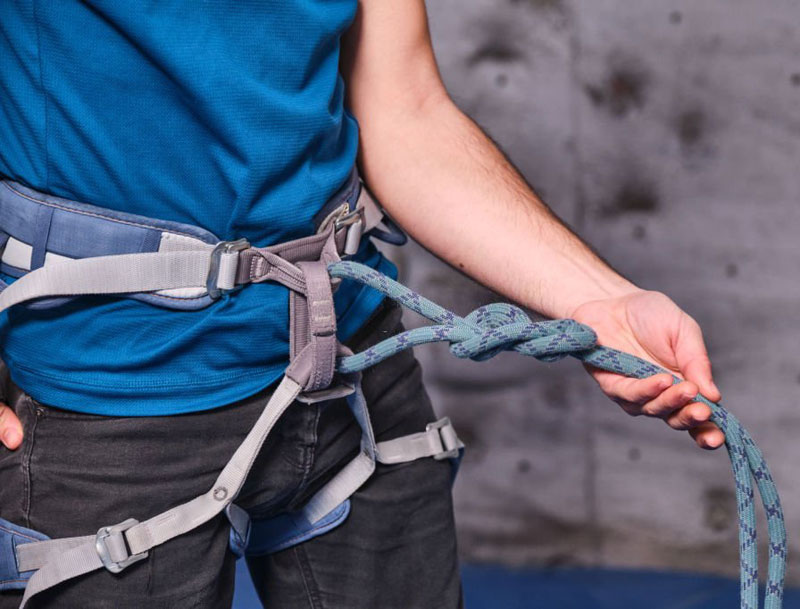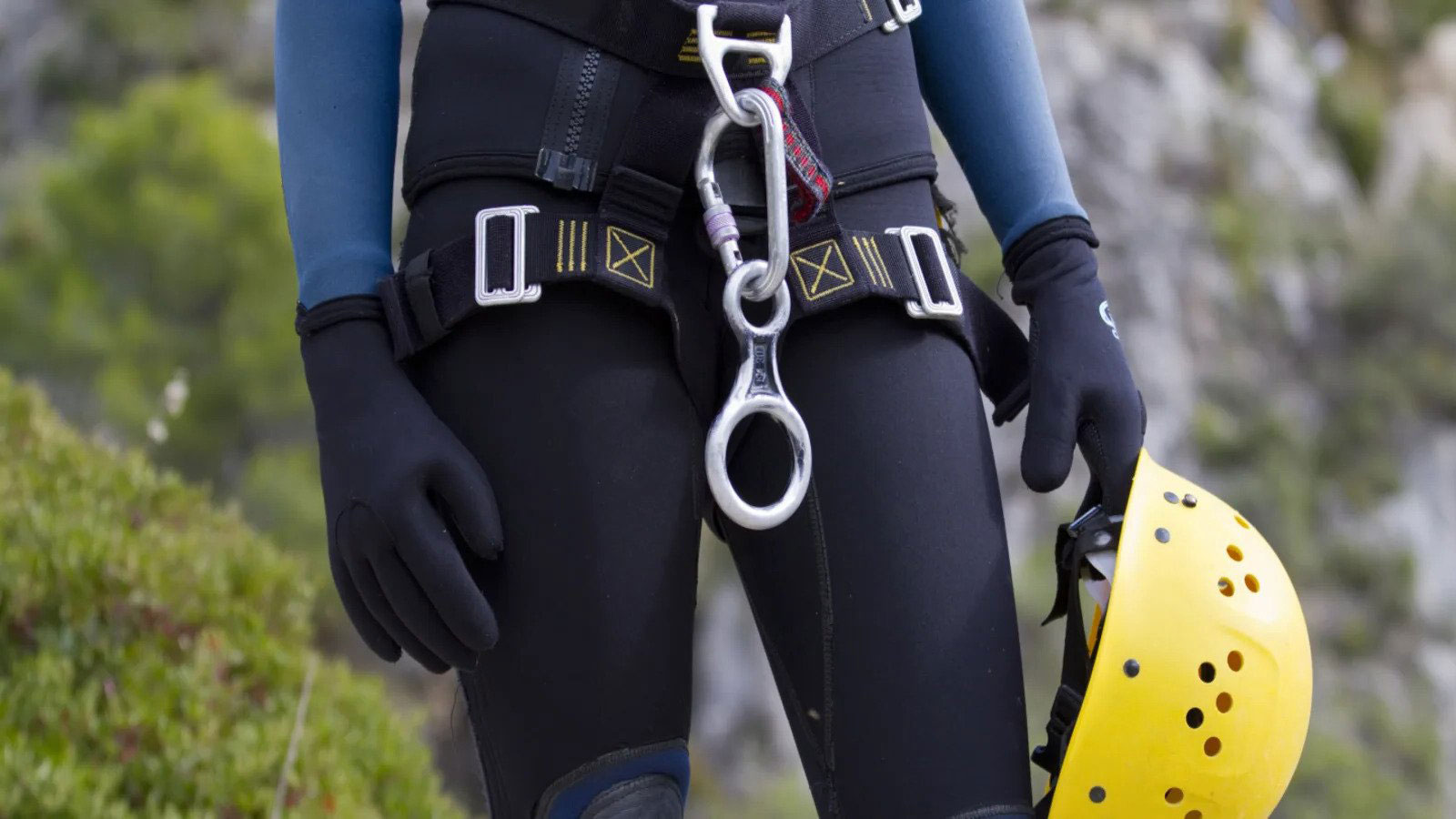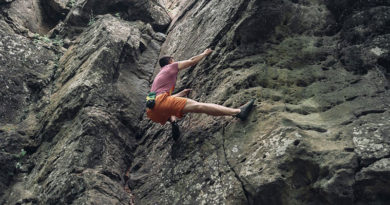The Types of Climbing Harnesses Explained
Climbing is an adventurous and thrilling activity that requires proper gear, especially when it comes to a harness. A climbing harness is an important piece of equipment that provides the climber’s safety and comfort while on the mountain. The harness offers support and appropriately distributes weight across the body, reducing injuries and making climbing easier. In this article, I’ll show you the different types of climbing harnesses available on the market and their intended uses. Whether you’re a beginner or an experienced climber, it is important to understand the types of climbing harnesses. This is because the wrong harness can easily ruin your climbing experience.
1. Sit Harnesses

A sit harness is a type of climbing harness that fits around the waist and legs. A sit harness’s principal function is to provide support and security, particularly in the event of a fall. The harness is intended to allow the climber to sit in it while hanging or resting on a climb, therefore the name “sit harness.”
A belt that goes around the waist and two leg loops that go around the legs are common components of a sit harness. For comfort, the waistband is typically cushioned. The leg loops are also adjustable to accommodate the individual climber’s waist and leg size. The harness also has gear loops and connection points for gear like carabiners and quickdraws. Further, a belay loop to connect the climber to a rope.
Sit harnesses are commonly used in sport climbing, trad climbing, and big wall climbing. Sit harnesses come in a variety of styles that are tailored to particular climbing disciplines and user preferences. For example, sport climbing harnesses are lightweight and simple in construction. Large wall climbing harnesses, on the other hand, have more padding and gear loops for extended multi-pitch climbs.
Sub-Types: Sit Harness
There are some sub-types of sit harnesses available and they include:
- Basic Sit Harness: A basic sit harness is a straightforward design featuring a waistline and leg loops. It also features a few gear loops and attachment points. It’s great for first-time climbers or those who don’t need a lot of gear.
- Sport Climbing Harnesses: They are intended for use in sport climbing, which consists of climbing routes with pre-installed protection. They are often lightweight and minimalist in design. They have just enough gear loops and attachment points for the climber’s basic equipment.
- Trad Climbing Harnesses: They are intended for traditional climbing, which involves providing protection as the climber ascends. When compared to sports climbing harnesses, they are designed to carry more gear and have more gear loops and attachment points.
- Big Wall Climbing Harnesses: These are designed for multi-pitch climbing on big walls. They are built for comfort, with extra padding and a high waist for extended hours of hanging or belaying. They also have extra gear loops and attachment points, allowing them to carry more gear.
- Adjustable Sit Harnesses: As the name implies, they are adjustable and designed to fit various waist and leg sizes. These features make them perfect for gyms, guide services, and families with numerous climbers.
- Women’s specific sit harness: Women’s sit harnesses are specifically created for women, taking into mind their different anatomy from men. They include a thinner waistband, a modified leg loop form, and padded pressure spots that are more appropriate for women’s bodies.
2. Full-Body Harnesses

A full-body harness is a type that you will find most commonly with climbers. They are designed to provide full-body support and are ideal for beginner climbers or for use in rescue operations. These harnesses have a wide waistband and leg loops that go around the legs. This ensures that the weight is distributed evenly across the body. They also feature adjustable straps so that you can customize the fit if you have thick thighs. Unlike a traditional harness (which only covers the waist and legs), a full-body harness wraps around your torso, legs, and often arms.
The “evenly distributed feature” provides a little more safety and support to your body. With this feature, you can keep your hand balanced, which lowers the chance of injury in case you fall. Furthermore, full-body harnesses often include several gear and rope attachment locations. This allows for greater mobility in climbing scenarios. Full-body harnesses are often used in canyoneering, industrial climbing, and rescue operations when you need extra support and safety. These harnesses are also widely used in climbing activities with beginner climbers.
Sub-Types: Full-Body Harness
There are two main sub-types of full-body harnesses:
- Seat Harnesses: They are worn around the waist and hips to provide support and comfort while hanging or suspended in the air. They usually have adjustable leg loops and a waist belt that fasten with a buckle or a sliding mechanism and allow the harness to be tightened or relaxed as needed.
- Chest Harnesses: Chest harnesses are intended to supplement the support and stability of a full-body harness. They have a chest strap that wraps over the upper torso, distributing weight more evenly and relieving pressure on the waist and hips. Chest harnesses are frequently utilized in emergency scenarios or when working at heights because they enhance security and stability.
Both the seat and chest harnesses can be coupled to form a full-body harness.
3. Specialty Harnesses

Specialty harnesses are a type of climbing harness that is designed for specific climbing activities and techniques. They are designed to meet the specific needs and demands of the activity. They often have features not found in other types of climbing harnesses.
Some examples of specialty harnesses include:
Aid Climbing Harness
Aid climbing harnesses are made for aid climbing. This is a kind of climbing that involves dragging oneself up a route using gear rather than supports. With extra padding and a high waist shape, aid climbing harnesses are designed to give optimal comfort for climbers who may spend hours dangling in their harness. They also offer a plethora of gear loops and attachment hooks to carry all of the necessary climbing gear.
Via Ferrata Harness
Via Ferrata harnesses are intended for Via Ferrata climbing. This activity involves ascending and descending a fixed rope and ladder system. They are lightweight and small, with a straightforward design and a secure attachment point for the Via Ferrata lanyard.
Rappelling Harness
Rappelling harnesses are made for rappelling. This is a technique for descending a vertical or near-vertical terrain. They are built to last, with a solid attachment point for the rappelling rope and a reinforced belay loop.
Ice Climbing Harness
Ice climbing harnesses are specially made for ice climbing. This involves ascending ice formations. They are lightweight and compact, with a secure ice axe connection point and a reinforced belay loop for increased security.
Canyoneering Harness
A canyoneering harness is a kind of climbing harness made specifically for canyoneering, the sport of exploring canyons. Canyoneering often combines activities including hiking, rappelling, swimming, and technical rope work. Canyoneering harnesses are meant to be versatile and multi-functional, allowing the canyoneer to move freely and easily execute various tasks. They normally have a low-profile design with a waistline and leg loops for optimal movement. These harnesses also feature gear loops and gear attachment points.
Mountaineering Harness
A mountaineering harness is a type of climbing harness that is specifically built for mountaineering or mountain climbing. Technical rope work, glacier travel, and steep ice or rock climbing are all common aspects of mountaineering. Mountaineering harnesses are lightweight and compact since climbers must carry their gear for extended periods of time in the mountains. They usually feature a simple design with a waistline and leg loops. You will also find fewer gear loops and attachment points to save weight and bulk.
Rescue Harness
Rescue harnesses are used in rescue operations, most commonly in rock climbing, mountaineering, and industrial settings. They are intended to provide the greatest level of safety and security for both the rescuer and the person being rescued. Rescue harnesses are often designed with a high waist to provide additional support and comfort to the rescuer. They also contain a secure attachment point for a rescue rope. You will also find a lot of gear loops and attachment points. These loops and attachment points let the rescuer carry all of the gear required for the rescue operation.
Tree Climbing Harness
A tree climbing harness is a sort of climbing harness that is built specifically for working and climbing trees. Arborists, tree workers, and researchers use tree climbing harnesses to access and work in trees. They usually have a waistband and leg loops, as well as gear loops and attachment hooks for tools and gear.
How to Choose the Right Climbing Harness?
Here are some important factors to consider while selecting a climbing harness:
Type of Climbing
Different styles of climbing demand different harnesses. A mountaineering harness must be lightweight because weight is critical for mountaineering. A canyoneering harness, on the other hand, must be made with waterproof materials because it will frequently come into contact with water. When selecting a harness, consider the type of climbing you will be doing.
Comfort
When selecting a climbing harness, comfort is essential. Choose a harness with an adjustable waistline and leg loops that fit comfortably and securely. A cushioned waistline and adjustable leg loops can aid in chafing prevention and comfort.
Gear Loops and Attachment Points
When selecting a harness, consider the gear you will be hauling. Look for a harness that has enough gear loops and attachment points to hold your tools and gear.
Weight and Bulk
If you will be carrying your stuff for extended periods of time, look for a lightweight and compact harness. Some harnesses are made to be light and compact, while others are made to be more supporting and pleasant.
Safety Features
When choosing a climbing harness, the most crucial factor to consider is safety. Look for a harness with a sturdy climbing rope attachment point and a strengthened belay loop. Consider getting a harness with extra safety features like a locking carabiner or a second tie-in point.
Budget
Climbing harnesses can range in price from cheap to highly expensive. When selecting a harness, keep your budget in mind and make sure you acquire the greatest harness for your demands and budget.




